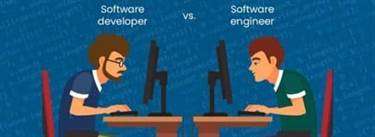Share This Post
C is widely used to create various apps, operating systems such as Windows, and other complicated programs such as the Oracle database, Git, Python interpreter, and others. C is sometimes used as an intermediate https://www.globalcloudteam.com/ language by implementations of other languages. This approach may be used for portability or convenience; by using C as an intermediate language, additional machine-specific code generators are not necessary.
National adoption of an update to the international standard typically occurs within a year of ISO publication. It is not necessary to have any prior programming experience. C has a wide range of real-world applications that aren’t limited to the development of OSes and applications. C is also used in areas such as graphical user interface development and integrated development environments.
The Early Days of Unix with Assembly language
When you develop a program in C#, or any other .NET language, you are able to draw on a universe of tools and libraries written for the .NET runtime. C is a great language for expressing common ideas in programming in a way that most people are comfortable with. It is as close to the machine as possible while it is almost universally available for existing processor architectures. There is at least one C compiler for almost every existent architecture.
Memory safety by default, though, is Rust’s main selling point. C code is compiled into machine code, which is executed by the process directly. Java is compiled into bytecode, which is intermediate code that the JVM interpreter then converts to machine code. Further, although Java’s automatic memory management is a blessing in most circumstances, C is better suited for programs that must make optimal use of limited memory resources, because of its small initial footprint. After decades, Java remains a staple of enterprise software development—and a staple of development generally. Unlike C, though, Java doesn’t by default compile to native code.
Relations to other languages
A common language feature that system programming cannot rely on is garbage collection, or even just dynamic allocation for some embedded systems. Embedded applications are very limited in time and memory resources. They are often used for real-time systems, where a non-deterministic call to the garbage collector cannot be afforded. And if dynamic allocation cannot be used because of the lack of memory, it is very important to have other mechanisms of memory management, like placing data in custom addresses, as C pointers allow. Languages that depend heavily on dynamic allocation and garbage collection wouldn’t be a fit for resource-limited systems. Such is its portability and efficiency that “compilers, libraries, and interpreters of other programming languages are often implemented in C”.
- Embedded applications are very limited in time and memory resources.
- The thing is, all of the pluses in C++ can also work as minuses.
- It mixes both high level readability features and the low level functionality, making it the perfect choice for writing an operating system.
- Heap, stack, and unmanaged system memory are all accessible via .NET APIs and objects.
- The input it takes in is the parameter called n, that returns an int when the function is called.
- At first, he tried to write a Fortran compiler, but soon gave up the idea.
In 1967, a new computer programming language was announced called as ‘BCPL’ which stands for Basic Combined Programming Language. BCPL was designed and developed by Martin Richards, especially for writing system software. Assembling means taking the hello.s file containing assembly code statements as input and, with the help of another program that is executed automatically in the compilation process, assembling it to machine code instructions. This means it will have as output actual 0s and 1s, or binary format statements.
How to Use Conditional Statements in C
In early versions of C, only functions that return types other than int must be declared if used before the function definition; functions used without prior declaration were presumed to return type int. Semicola terminate statements, while curly braces are used to group statements into blocks. While C has transformed over the years, it’s still used commonly in lower-level programs, such as kernels. I hope this gave you an insight into the ‘whys’ and the ‘hows’ of the language and the fundamentals you need to know to start writing basic programs in C. This marks the end of this intoduction to the C programming language! In this case, the square function take in an input and has a return value (both are ints).

We’ll go over the history of the language, why and where it is used, the compilation process, and some very basic programming concepts that are common in most popular programming languages. Many interesting projects, from big database servers or operating system kernels, to small embedded applications you can even do at home for your personal satisfaction and fun, are done in C. There is no reason to stop doing things you may love for the single reason that you don’t know an old and small, but strong and time-proven programming language like C.
Why is the C Programming Language Still Used?
The world needed a common version of C, a standard for the language. This increase in popularity came from not only the power C gave to the machine but also to the programmer. It also helped that the Unix operating system was gaining the same popularity at an even faster rate.

A computer program written in C is a human readable and ordered set of instructions that a computer executes. It aims to provide a solution to a specific computing problem and tell the computer to perform a certain task with a sequence of instructions that it needs to follow. These languages hide most of the details about how programs actually work underneath the hood. Using these languages, you don’t have to deal with memory allocation and bits and bytes since there are more levels of abstraction. And you don’t need this level of granular control with higher level applications where interaction with memory is error-prone.
Array–pointer interchangeability
Assembly programs can be complex and lengthy, and programmers needed a language that promoted a user-friendly set of instructions. C fulfilled these objectives and also helped overcome the challenges that programmers experienced with BASIC, B and Basic Combined Programming Language. This means that it uses a compiler to analyse the source code written in C and then turns it into a binary https://www.globalcloudteam.com/c-for-game-development-how-to-code-the-best-product/ file that the computer’s hardware can directly execute. There are many programming languages, today, that allow developers to be more productive than with C for different kinds of projects. There are higher level languages that provide much larger built-in libraries that simplify working with JSON, XML, UI, web pages, client requests, database connections, media manipulation, and so on.
C is universal and programs written in it can be compiled and run across many platforms, architectures, and a variety of machines without losing any performance. This makes C a great choice for creating systems and programs where performance really matters. As these organisations created compilers of their own, they started to change characteristics of the language to adapt to each platform the compiler was being written for. Towards the late 1970’s, C’s popularity started to rise and the language started getting more widespread support and use. Up until that point, C was still only available for Unix systems and compilers were not available outside of Bell labs.
Why Learn C?
Despite the fact that C is a general purpose programming language, it is mainly used to interact with low level machine functions. Besides the practical reasons behind learning the language, knowing C can help you understand how the computer actually works, what is happening underneath the hood, and how programs actually run and execute on machines. Dennis Ritchie created this powerful general-purpose programming language at Bell Labs in the 1970s to encourage cross-platform programming and replace assembly language in operating systems.
訂閱我們的電子通訊
Get updates and learn from the best
More To Explore
Hauptstelle Stauff 888 casino einzahlung per telefon Teutonia Und Werk Ehrenfeld
Content Erreichbar Geschä